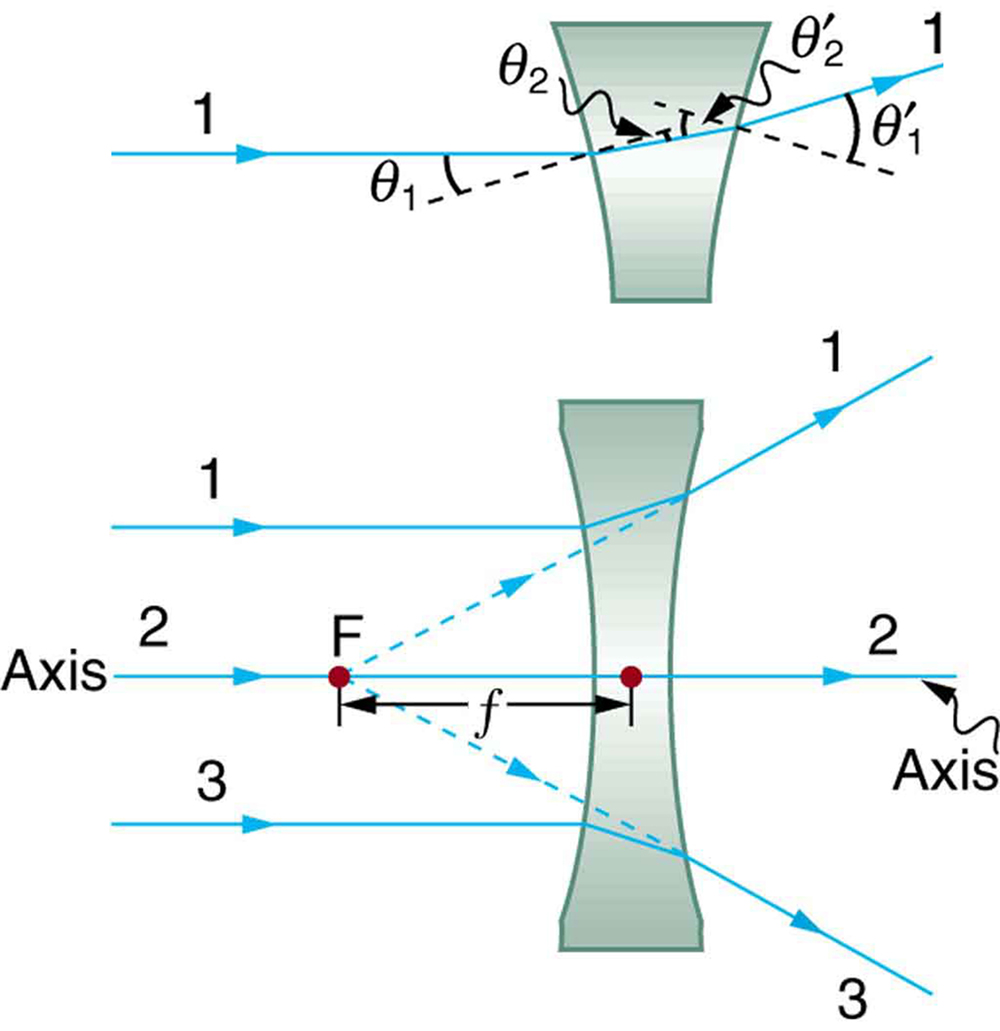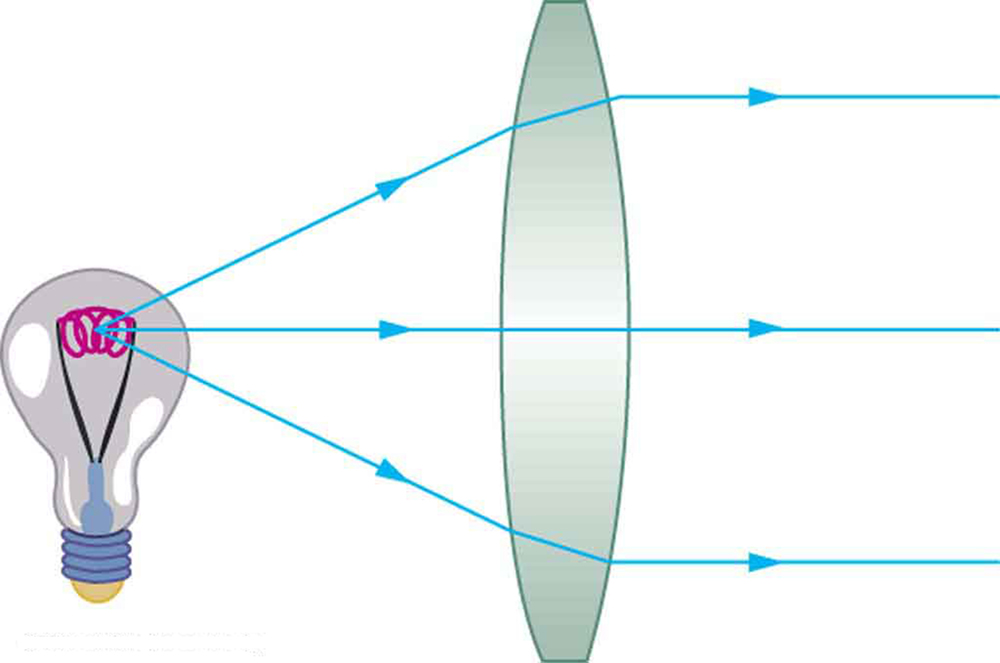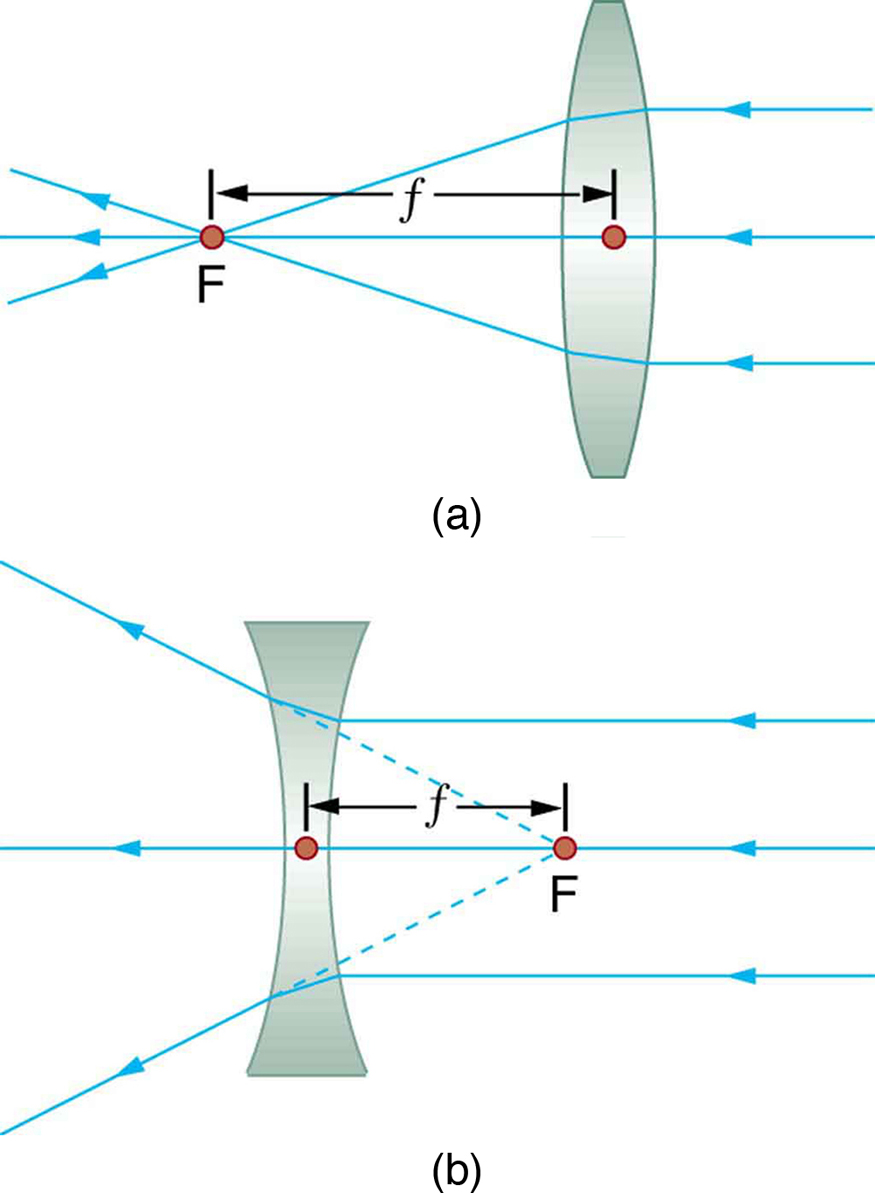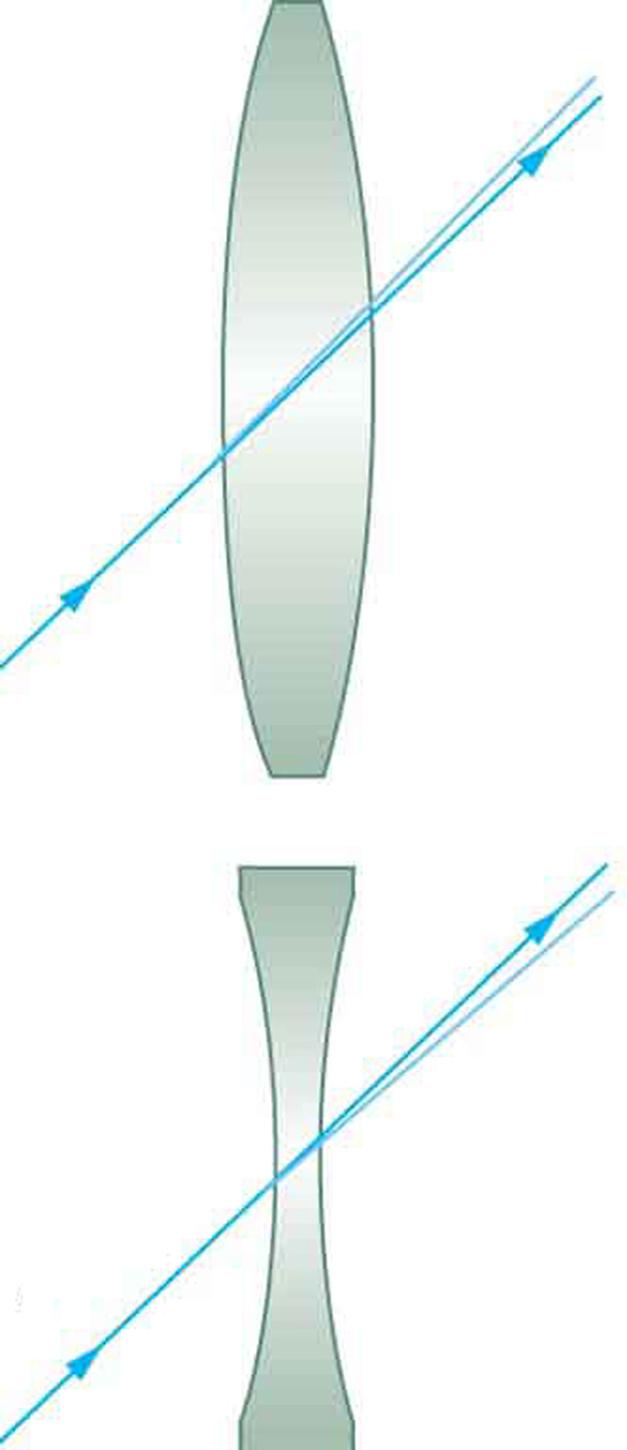| << Chapter < Page | Chapter >> Page > |

A lens that causes the light rays to bend away from its axis is called a diverging lens.
As noted in the initial discussion of the law of refraction in The Law of Refraction , the paths of light rays are exactly reversible. This means that the direction of the arrows could be reversed for all of the rays in [link] and [link] . For example, if a point light source is placed at the focal point of a convex lens, as shown in [link] , parallel light rays emerge from the other side.

Ray tracing is the technique of determining or following (tracing) the paths that light rays take. For rays passing through matter, the law of refraction is used to trace the paths. Here we use ray tracing to help us understand the action of lenses in situations ranging from forming images on film to magnifying small print to correcting nearsightedness. While ray tracing for complicated lenses, such as those found in sophisticated cameras, may require computer techniques, there is a set of simple rules for tracing rays through thin lenses. A thin lens is defined to be one whose thickness allows rays to refract, as illustrated in [link] , but does not allow properties such as dispersion and aberrations. An ideal thin lens has two refracting surfaces but the lens is thin enough to assume that light rays bend only once. A thin symmetrical lens has two focal points, one on either side and both at the same distance from the lens. (See [link] .) Another important characteristic of a thin lens is that light rays through its center are deflected by a negligible amount, as seen in [link] .
A thin lens is defined to be one whose thickness allows rays to refract but does not allow properties such as dispersion and aberrations.
Look through your eyeglasses (or those of a friend) backward and forward and comment on whether they act like thin lenses.



Notification Switch
Would you like to follow the 'College physics for ap® courses' conversation and receive update notifications?